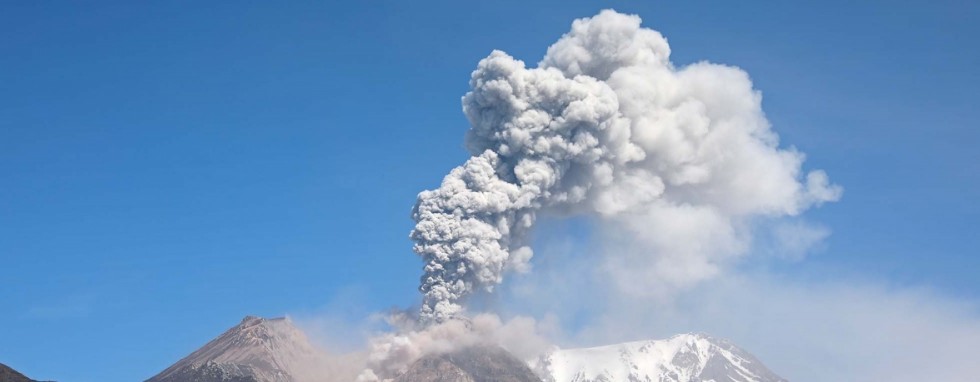Sheveluch erupts ash up to 10 km (33 000 feet), Aviation Color Code Red

Yet another powerful eruption occurred at Russia's Sheveluch volcano at 07:05 UTC on May 16, 2017. The eruption sent ash up to 10 km (33 000) above sea level, according to the Tokyo VAAC.
KVERT reported the eruption was accompanied by pyroclastic flows, producing ash which rose up to 3.5 – 4 km (11 500 – 13 123 feet) above sea level.
At 07:20 UTC, ash plume/cloud was extending 36 km (22 miles) northeast of the volcano. By 07:30 UTC, ash cloud was reaching an altitude of 10 km (33 000 feet) above sea level and was moving east at 65 km/h (40 mph).
Following the eruption, KVERT raised the Aviation Color Code from Orange to Red. "Explosive-extrusive eruption of the volcano continues," it said. "Ash explosions up to 8 – 10 km (26 200 – 32 800 feet) a.s.l. could occur at any time. Ongoing activity could affect international and low-flying aircraft".
Today's eruption is comparable to that of May 11, when explosions that started at 14:40 UTC sent ash up to 9 – 10 km (33 000 feet) above sea level. At the time, 115 x 70 km (71 – 43 miles) ash clouds drifted northwest of the volcano.
Geological summary
The high, isolated massif of Sheveluch volcano (also spelled Shiveluch) rises above the lowlands NNE of the Kliuchevskaya volcano group. The 1 300 cu km (311.9 cu miles) volcano is one of Kamchatka's largest and most active volcanic structures. The summit of roughly 65 000-year-old Stary Shiveluch is truncated by a broad 9-km-wide late-Pleistocene (5.6 miles) caldera breached to the south. Many lava domes dot its outer flanks. The Molodoy Shiveluch lava-dome complex was constructed during the Holocene within the large horseshoe-shaped caldera; Holocene lava dome extrusion also took place on the flanks of Stary Shiveluch.
At least 60 large eruptions have occurred during the Holocene, making it the most vigorous andesitic volcano of the Kuril-Kamchatka arc. Widespread tephra layers from these eruptions have provided valuable time markers for dating volcanic events in Kamchatka. Frequent collapses of dome complexes, most recently in 1964, have produced debris avalanches whose deposits cover much of the floor of the breached caldera. (GVP)
Featured image: Sheveluch erupting on May 14, 2017. Credit: KVERT

33K feet… over 6.2 miles… over 10 kilometers. That could affect global weather. It should help check some effects by man made global climate change.